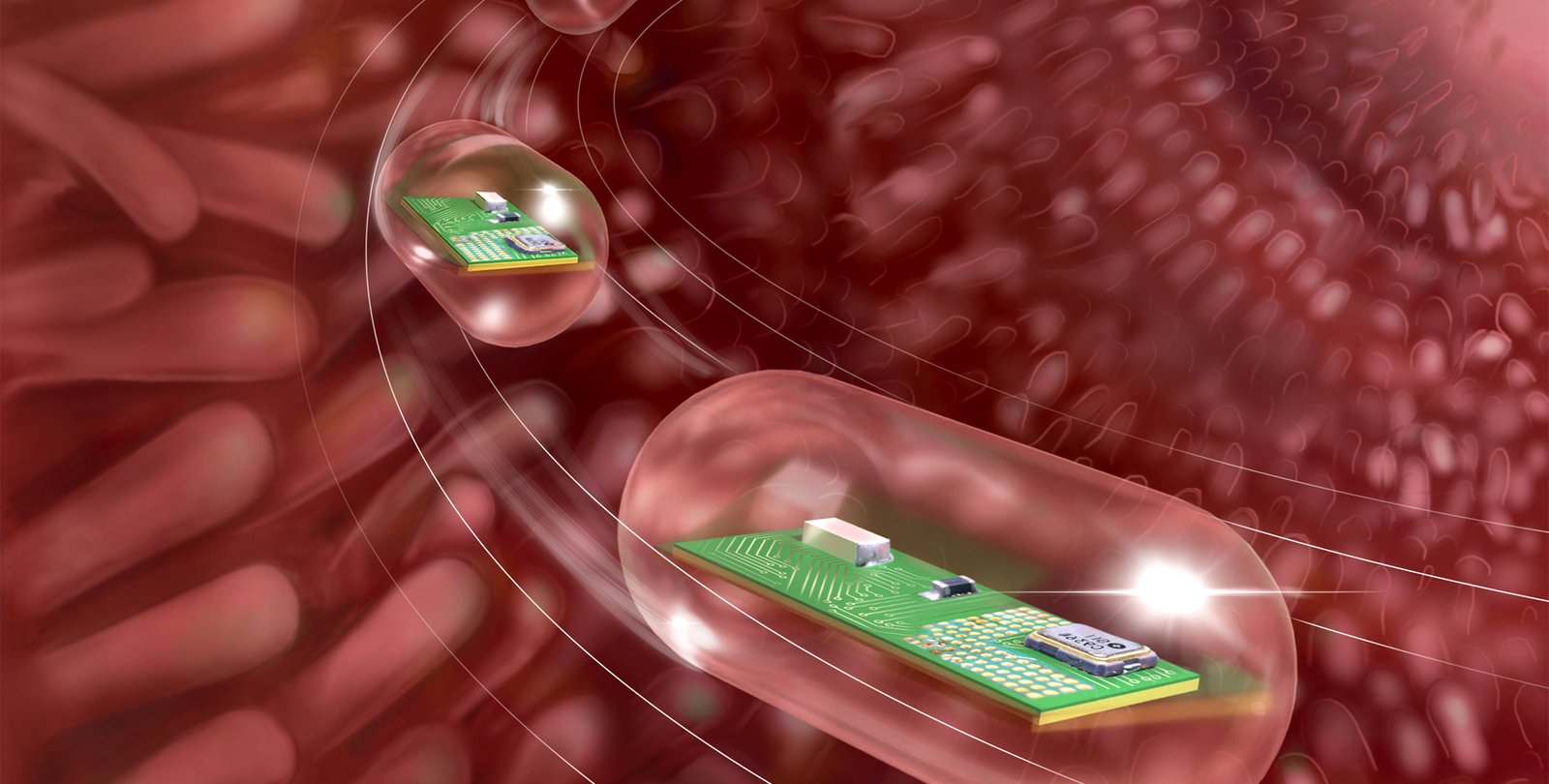The idea of journeying inside the human body to solve medical problems has been around at least since a hokey sci-fi film popularized the concept in the 1960s, but this approach to medicine has never become real because shrinking rays, sadly, do not exist.
However, researchers have developed proxies for human doctors that are small enough travel through the human body and help diagnose ailments. These “smart pills” are typically swallowed, and as they pass through the digestive tract, they collect health data, record images, and even deliver drugs.
But just like a delivery driver needs to know which street they are on to drop off a pizza at the right address, a smart pill must know its location in the body to do its job well. Now, a team of researchers from Caltech have developed a technological platform that they describe as a “GPS” for smart pills.
“Wireless localization of smart pills or other tiny devices deep inside the body, with high accuracy, is very challenging,” says Azita Emami, the Andrew and Peggy Cherng Professor of Electrical Engineering and Medical Engineering and executive officer for electrical engineering. “But a low-cost solution can open new avenues in diagnosis and treatment of common medical conditions.”
Mikhail Shapiro, professor of chemical engineering and medical engineering and Howard Hughes Medical Institute investigator, says there are three possible ways to access locations inside the body to see what is going on.
“We can stick something in there like a colonoscopy device, cut the body open, or you can swallow a little pill that passes through you and makes the relevant measurements,” Shapiro says. “I think most people would choose the latter option if it provides the performance that is needed to diagnose and treat them.”
Caltech doctoral student Saransh Sharma developed this smart-pill technology with Emami and Shapiro, and it was tested in pigs in collaboration with researchers at MIT. A paper describing their work appears in the journal Nature Electronics.
